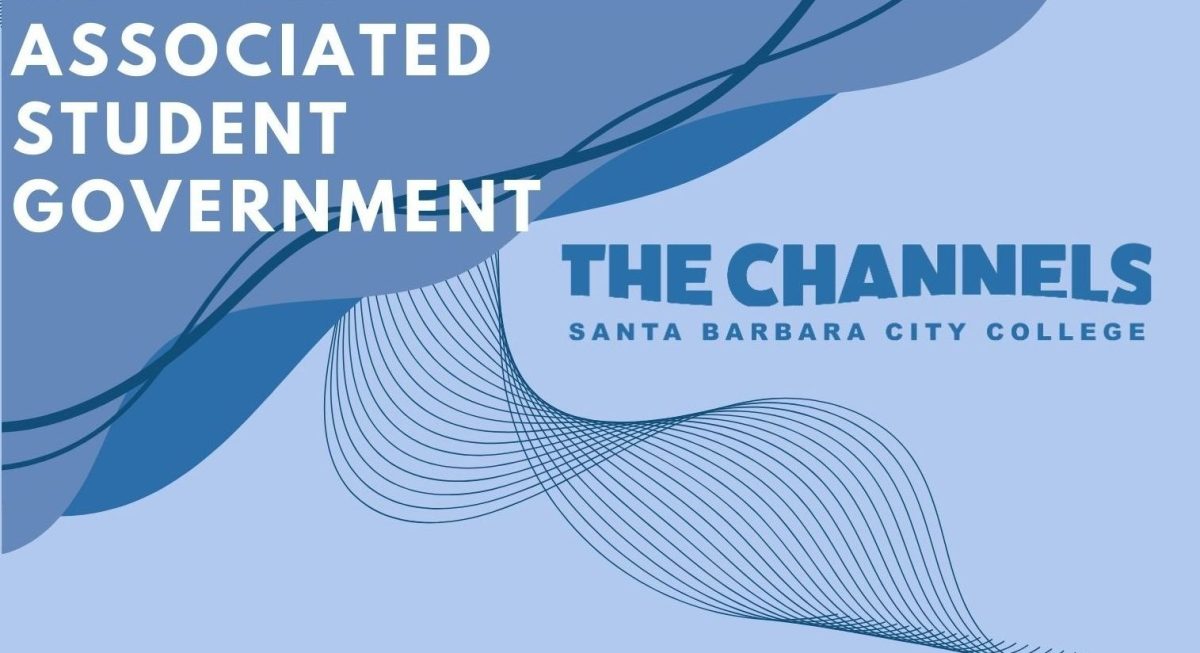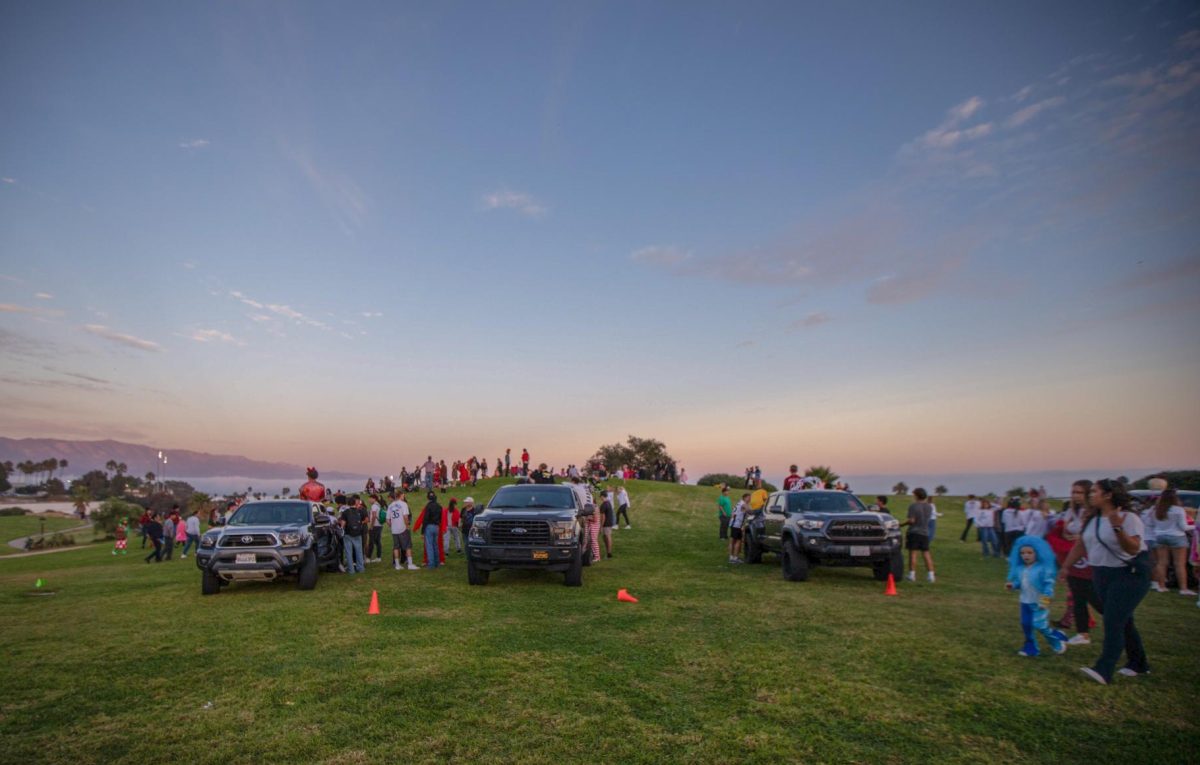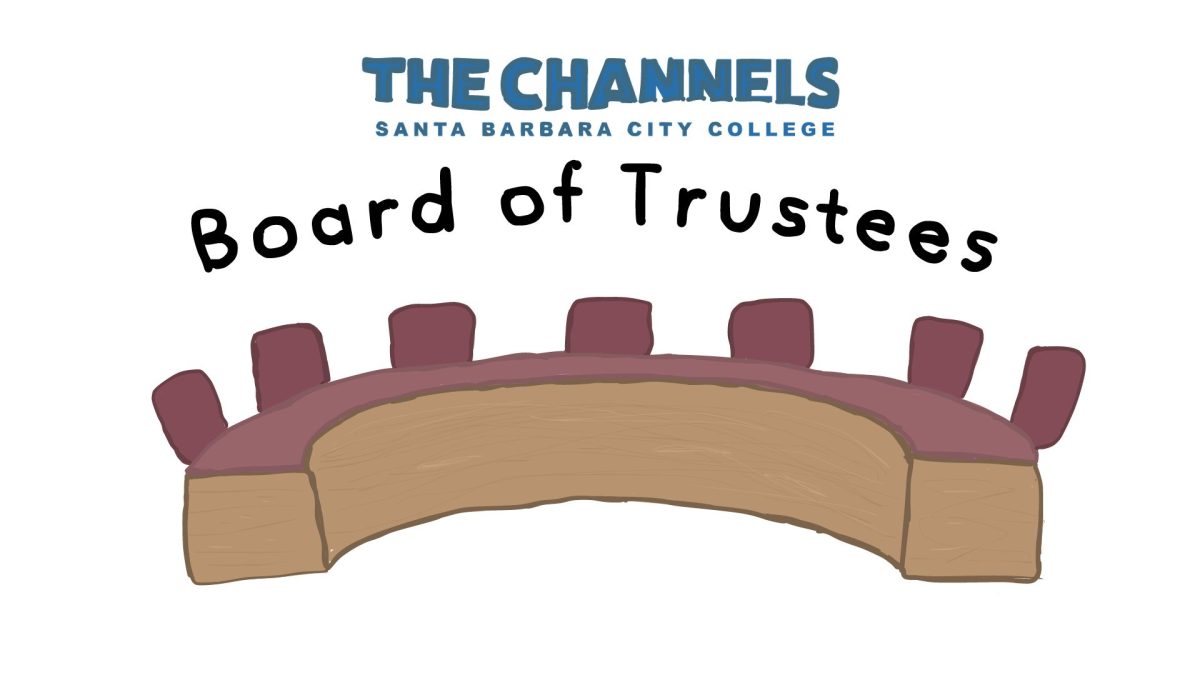At home in the white-walled gallery, Dane Goodman talks animatedly about the latest artist featured in the Atkinson Gallery.
With his angular glasses, long-sleeve dress shirt, and white-grey hair, Goodman brings a sense of professionalism to the gallery. And whenever he’s there, he greets students with a smile and a brochure.
But it wasn’t always this way.
When art department chair Diane Handloser first began working at SBCC in 1970, the art department was in what is now the Campus Center. The Humanities Building was built in 1975, by architects Ken Nack and Bob Frame.
The gallery was named after former teacher and department chair Charles Atkinson, who was a great mentor to many students as well as the first art teacher, Handloser explained.
She never got the chance to meet him, because she was hired to replace him when he passed away. It was Atkinson who hired the first two members of the art department, Ken Nack and Bob Frame, who designed the Humanities Building.
Handloser realized how much of an impact he had when a student carved in “small, very neat letters” the words: “Charlie Atkinson was a very great man” on her office door, Handloser remembered with a chuckle.
The teachers initially took turns organizing the gallery month by month in the beginning, and had a small budget so it was just a matter of hours and hours of work, said Handloser.
When art professor Linda Benet was hired in 1987 as the chair of the art department, it was assumed that gallery director was a duty of the department chair. She the assumed both positions for six years, after which she suggested to the school that they should separate the gallery director from the chair position because of the large workload and the growth of the department, Benet said.
Five years later, Chris Bates joined the art department faculty as a ceramics teacher in 1998, and was drawn to the gallery from the moment he heard about the job.
“The reason why I got involved in the beginning was quite self-serving,” said Bates with a smile about his involvement with the gallery.
Bates was offered an exhibit his first year and when he was told that the fliers were in black and white, he was determined to change that. So in the spring of 1998, the gallery had their first color announcement, Bates said.
“I was overseeing the gallery from 1998-2000, and at that time I think we had four directors in four semesters, and the reason being is that the salary was $1,800 for ten months, to do seven shows, which comes out to just pennies per hour pretty much,” explained Bates.
After many hours of paperwork by Bates, and much effort by the faculty, the administration came up with enough money to offer Dane Goodman a part-time position as gallery director, which was turned into a full-time position in 2004.
Goodman’s three-year contract runs out in May, at which time the entire process of reevaluating where his salary comes from will start all over again.
Goodman’s salary comes from donor money and a small amount from Superintendent-President John Romo. “It took us 30 years to get to have three years of full-time salary,” said Bates.
The first thing Goodman did to make an impression was to unify the graphics on the cards the gallery sent out to alert people of a new exhibit.
Through Goodman’s knowledge of artists and his connections through working at the Santa Barbara Museum of art for 12 years, he is able to convince well-known artists to show their work at a community college gallery. Always modest, Goodman never attributes the gallery’s success to himself.
“I’m an artist and I know a lot of artists. After I worked in the museum, you just get to know people,” Goodman says when asked how he manages to get big-name artists like Sonsini to a small gallery.
“The Atkinson Gallery has finally begun to take its place in Santa Barbara as a community asset,” said Handloser.







